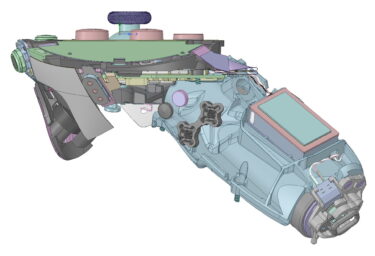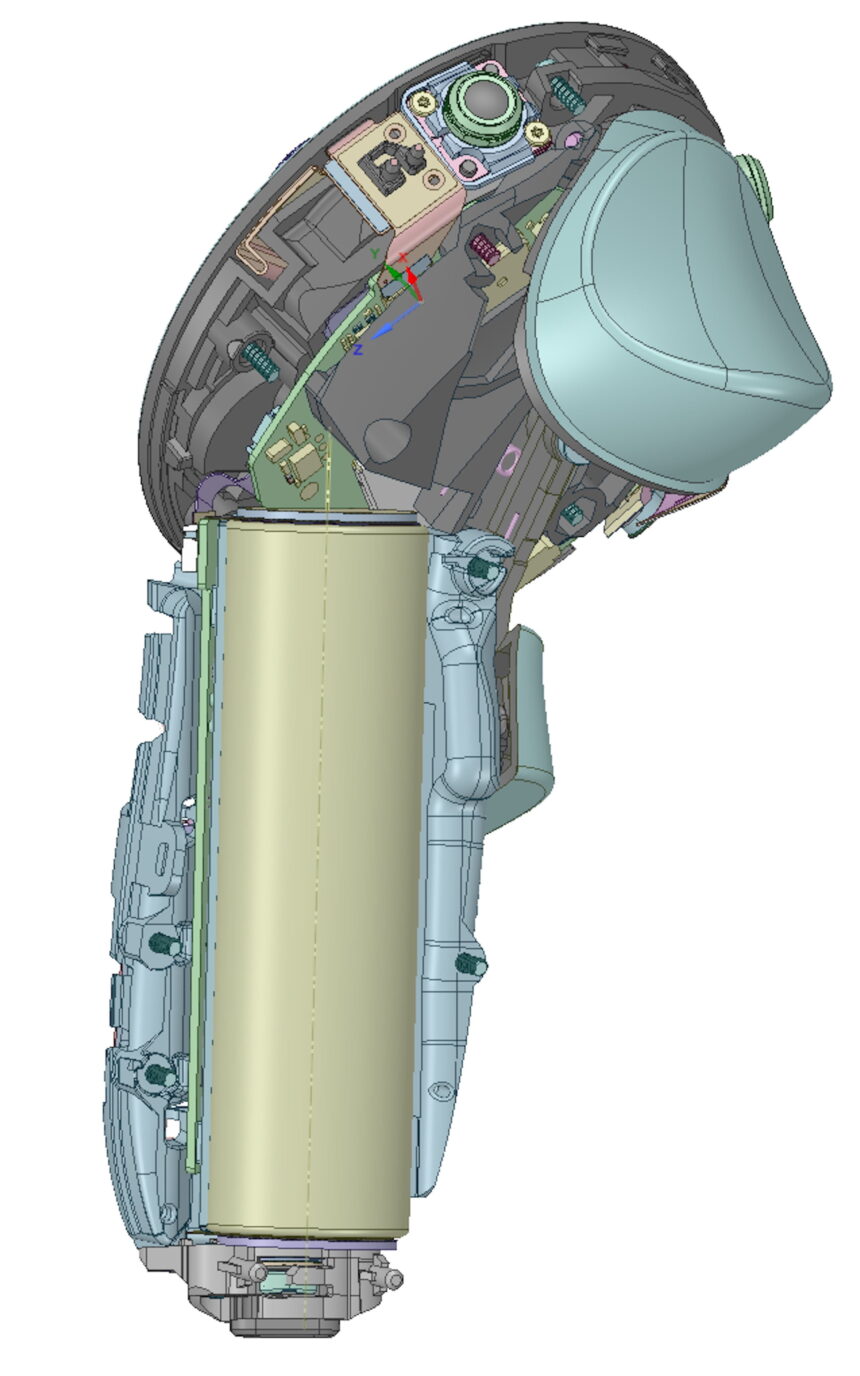Meta Cambria controllers support HD haptics and Quest 2 - report

Cambria appears with brand new VR controllers. Little was known about them until now. A leak brings new details to light.
We already knew that the VR controllers track themselves via integrated cameras. This has several advantages. For one, the space-consuming tracking rings become superfluous, which means the controllers take up less space and no longer get in each other's way. For another, the tracking volume becomes larger. If you place the controllers behind your back, the tracking should no longer fail. That's the theory, anyway.
According to an older video leak, the headset and the controllers are charged via the included docking station. The battery will be permanently installed, unlike the Quest 2 controllers, where the battery can be replaced.
Meta's chief technology officer Andrew Bosworth called the virtual reality controllers a "pretty serious upgrade" a few weeks ago, without going into technical details. Shortly after hardware analyst Brad Lynch recently claimed that Cambria would launch without controllers, Bosworth confirmed that the input devices would come out with Cambria.
In a subsequent report, Lynch explained why his sources were wrong and leaked the blueprints and other technical details of the controllers. As always with leaks, the information should be taken with a grain of salt. "Insider information" can be inaccurate, outdated, or just plain wrong.
New controllers: Meta is allegedly working on Quest 2 compatibility
According to Lynch, Meta was considering selling the controllers and docking station separately, either at launch or at a later date. One of the ulterior motives was to lower Cambria's entry price, especially in light of the fact that hand tracking is getting better. As for shipping headsets without controllers, Meta toys with such a thought consistently.
Lynch mentions another reason for a potential later launch of the controllers. Lockdowns of Chinese factories would have led to a delay in the controller production, which would have slightly delayed the Cambria launch.

Good to see in this picture: An IR tracking camera and the battery. | Image: Brad Lynch / Meta
The biggest slowdown, however, is due to an alleged planned Quest 2 support , Lynch's sources say. Meta is reportedly working hard to make the new, much-improved controllers compatible with Meta Quest 2. Meta solved some difficult problems, but not yet others, they say.
The sources do not confirm that the controllers and docking station will actually be sold separately and work with Meta Quest 2. If Meta decides to do so, the price is said to be $300.
Starlet: major haptics upgrade.
In early June, Lynch leaked the build plans of the Cambria headset. Now the blueprints of the Starlet controllers follow.
According to Lynch, the devices each have three infrared cameras for autonomous room tracking, a Qualcomm SoC, and a battery with a capacity of 3,200 mAH installed. One of the drawings shows the contacts required for charging.
According to Lynch, the controllers offer particularly high-quality haptics. A special actuator is installed under each of the trigger buttons, the thumb rest, and the grip - for reactive vibrations, pinching feedback, and high-quality vibration haptics (in that order).
Novel pressure sensor
Another new feature Lynch discovered is a pressure sensor at the tip of the grip, which should allow for more realistic or precise drawing on a solid surface.
That stands to reason. Meta famously markets Cambria as a pair of work goggles, with Horizon Workrooms as the central app. In virtual meetings, you can draw on whiteboards and blackboards by holding the Quest 2 controller upside down and drawing with the tip of the grip. A pressure sensor could improve this functionality.
Lynch claims to have heard that the grip could support special attachments, such as stylus tips. This feature could allow third-party manufacturers to develop special accessories for the controllers.
The technical features and most important facts about the Starlet controllers mentioned by Lynch are below:
- Qualcomm 662 SoC
- 3 IR cameras for self-sufficient 6-DoF tracking
- Rechargeable/fixed battery with a charging capacity of 3200 mAh
- HD haptics (multiple actuators per handle)
- Pressure sensor
- Significantly heavier than Quest 2 controllers
- Appears with Cambria
- Appears separately with charging cradle (price: $300)
All info about Cambria itself can be found in our Cambria info article.
Note: Links to online stores in articles can be so-called affiliate links. If you buy through this link, MIXED receives a commission from the provider. For you the price does not change.